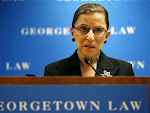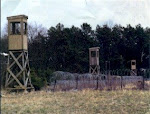 NEW YORK-Oil futures retreated from record highs set overnight as traders awaited the Federal Reserve's decision on interest rates and the government's report on crude oil and gasoline inventories.A rate cut could have a double impact on oil prices, analysts say.By stimulating economic growth, lower interest rates would increase demand for oil and petroleum products."There are uncertainties about the economy," said Antoine Halff, head of energy research at Fimat USA LLC.Moreover, many analysts see a weaker dollar as a natural side effect of lower rates, and that could promote buying of oil contracts by foreign investors.Beyond the Fed decision, energy investors are looking ahead to Wednesday's inventory report by the Energy Department's Energy Information Administration, expected to show inventories and refinery activity declined last week.Light, sweet crude for October delivery fell 2 cents to $80.55 a barrel on the New York Mercantile Exchange, fluctuating after rising to a record $81.24 overnight in electronic trading. The contract rose to settle at a record $80.57 on Monday.October gasoline fell 1.16 cents to $2.0326 a gallon on the Nymex, while heating oil futures fell 2.08 cents to $2.2079 a gallon.October natural gas fell 37.5 cents to $6.278 per 1,000 cubic feet. Natural gas prices have been volatile in recent days as tropical weather threats to critical gas and oil infrastructure in the Gulf of Mexico have grown or subsided.On Tuesday, the National Hurricane Center was watching two storm systems, one just east of Florida and the other in the central Atlantic. Neither was expected to strengthen quickly."The natural gas market has given up most of Monday's gains, with traders now forced to acknowledge that the storm development prospects are just not all that impressive," wrote Tim Evans, an analyst with Citigroup Inc., in a research note.In London, October Brent crude fell 42 cents to $76.56 a barrel on the ICE Futures exchange.At the pump, meanwhile, gas prices slipped 0.1 cent overnight to a national average of $2.787 a gallon, according to AAA and the Oil Price Information Service. Retail prices, which typically lag the futures market, peaked at $3.227 a gallon in late May.Early in the year, gas prices led the energy complex higher as an unusual number of refinery outages kept supplies low. With the end of summer driving season, energy investors have been far less focused on gasoline inventories and refinery activity than they once were.In its Wednesday report, analysts surveyed by Dow Jones Newswires expect the EIA to show that crude inventories fell by 1.5 million barrels, on average, in the week ended Sept. 14, while gasoline supplies fell by 1.3 million barrels.Refinery utilization likely fell by 0.5 percentage point to 90 percent of capacity, the analysts forecast, and distillate inventories, which include heating oil and diesel fuel, likely rose by 1.1 million barrels.Crude oil's recent rise into record territory has been driven in part by a believe that supplies are not keeping pace with robust global demand. Last week, for instance, prices rose despite OPEC's decision to boost production by 500,000 barrels a day this fall. Many analysts and investors saw that increase as too little.On Tuesday, oil prices drew additional support from new comments by Organization of Petroleum Exporting Countries officials that suggested the oil cartel won't increase production to push oil prices below $80 a barrel."OPEC has done what it can,"said Abdullah bin Hamad Al Attiyah, Qatar's oil minister."I see no need for additional oil supply that the market won't absorb."
NEW YORK-Oil futures retreated from record highs set overnight as traders awaited the Federal Reserve's decision on interest rates and the government's report on crude oil and gasoline inventories.A rate cut could have a double impact on oil prices, analysts say.By stimulating economic growth, lower interest rates would increase demand for oil and petroleum products."There are uncertainties about the economy," said Antoine Halff, head of energy research at Fimat USA LLC.Moreover, many analysts see a weaker dollar as a natural side effect of lower rates, and that could promote buying of oil contracts by foreign investors.Beyond the Fed decision, energy investors are looking ahead to Wednesday's inventory report by the Energy Department's Energy Information Administration, expected to show inventories and refinery activity declined last week.Light, sweet crude for October delivery fell 2 cents to $80.55 a barrel on the New York Mercantile Exchange, fluctuating after rising to a record $81.24 overnight in electronic trading. The contract rose to settle at a record $80.57 on Monday.October gasoline fell 1.16 cents to $2.0326 a gallon on the Nymex, while heating oil futures fell 2.08 cents to $2.2079 a gallon.October natural gas fell 37.5 cents to $6.278 per 1,000 cubic feet. Natural gas prices have been volatile in recent days as tropical weather threats to critical gas and oil infrastructure in the Gulf of Mexico have grown or subsided.On Tuesday, the National Hurricane Center was watching two storm systems, one just east of Florida and the other in the central Atlantic. Neither was expected to strengthen quickly."The natural gas market has given up most of Monday's gains, with traders now forced to acknowledge that the storm development prospects are just not all that impressive," wrote Tim Evans, an analyst with Citigroup Inc., in a research note.In London, October Brent crude fell 42 cents to $76.56 a barrel on the ICE Futures exchange.At the pump, meanwhile, gas prices slipped 0.1 cent overnight to a national average of $2.787 a gallon, according to AAA and the Oil Price Information Service. Retail prices, which typically lag the futures market, peaked at $3.227 a gallon in late May.Early in the year, gas prices led the energy complex higher as an unusual number of refinery outages kept supplies low. With the end of summer driving season, energy investors have been far less focused on gasoline inventories and refinery activity than they once were.In its Wednesday report, analysts surveyed by Dow Jones Newswires expect the EIA to show that crude inventories fell by 1.5 million barrels, on average, in the week ended Sept. 14, while gasoline supplies fell by 1.3 million barrels.Refinery utilization likely fell by 0.5 percentage point to 90 percent of capacity, the analysts forecast, and distillate inventories, which include heating oil and diesel fuel, likely rose by 1.1 million barrels.Crude oil's recent rise into record territory has been driven in part by a believe that supplies are not keeping pace with robust global demand. Last week, for instance, prices rose despite OPEC's decision to boost production by 500,000 barrels a day this fall. Many analysts and investors saw that increase as too little.On Tuesday, oil prices drew additional support from new comments by Organization of Petroleum Exporting Countries officials that suggested the oil cartel won't increase production to push oil prices below $80 a barrel."OPEC has done what it can,"said Abdullah bin Hamad Al Attiyah, Qatar's oil minister."I see no need for additional oil supply that the market won't absorb."As in the days of Noah...






















































































.bmp)

























.bmp)